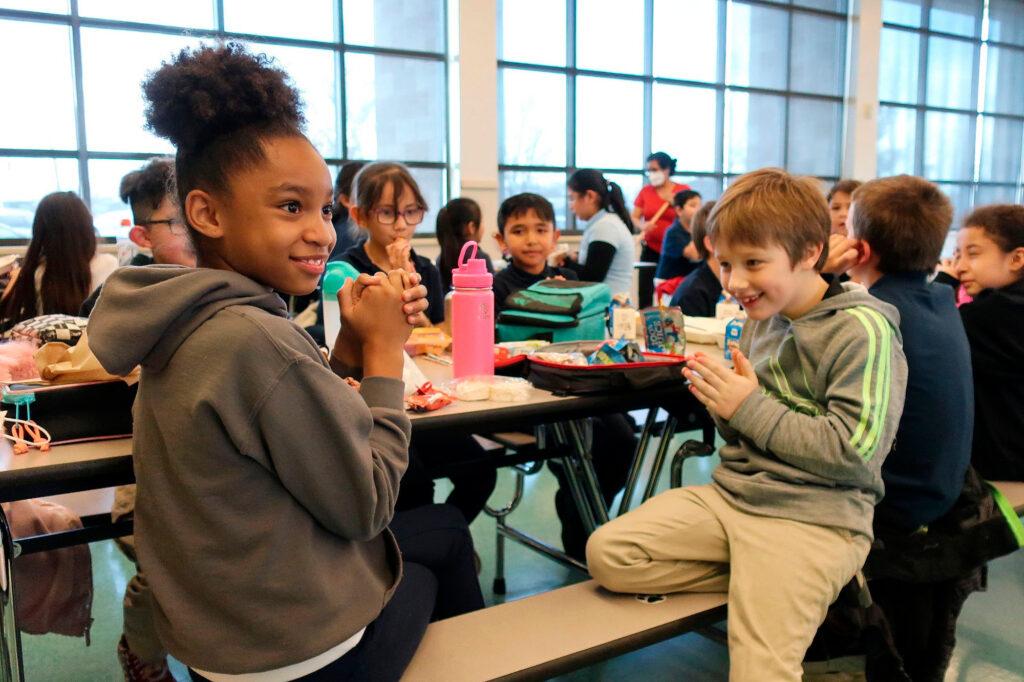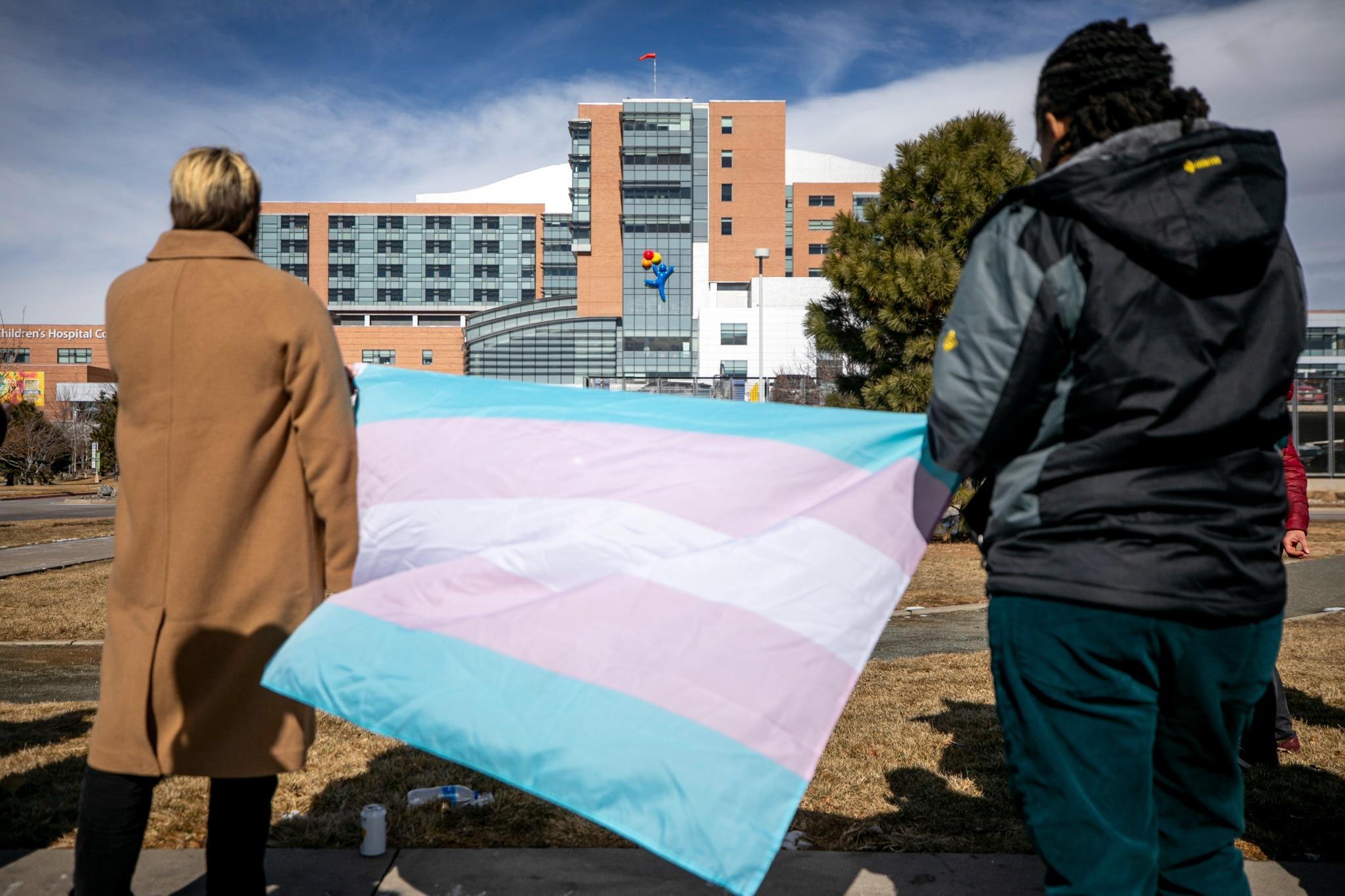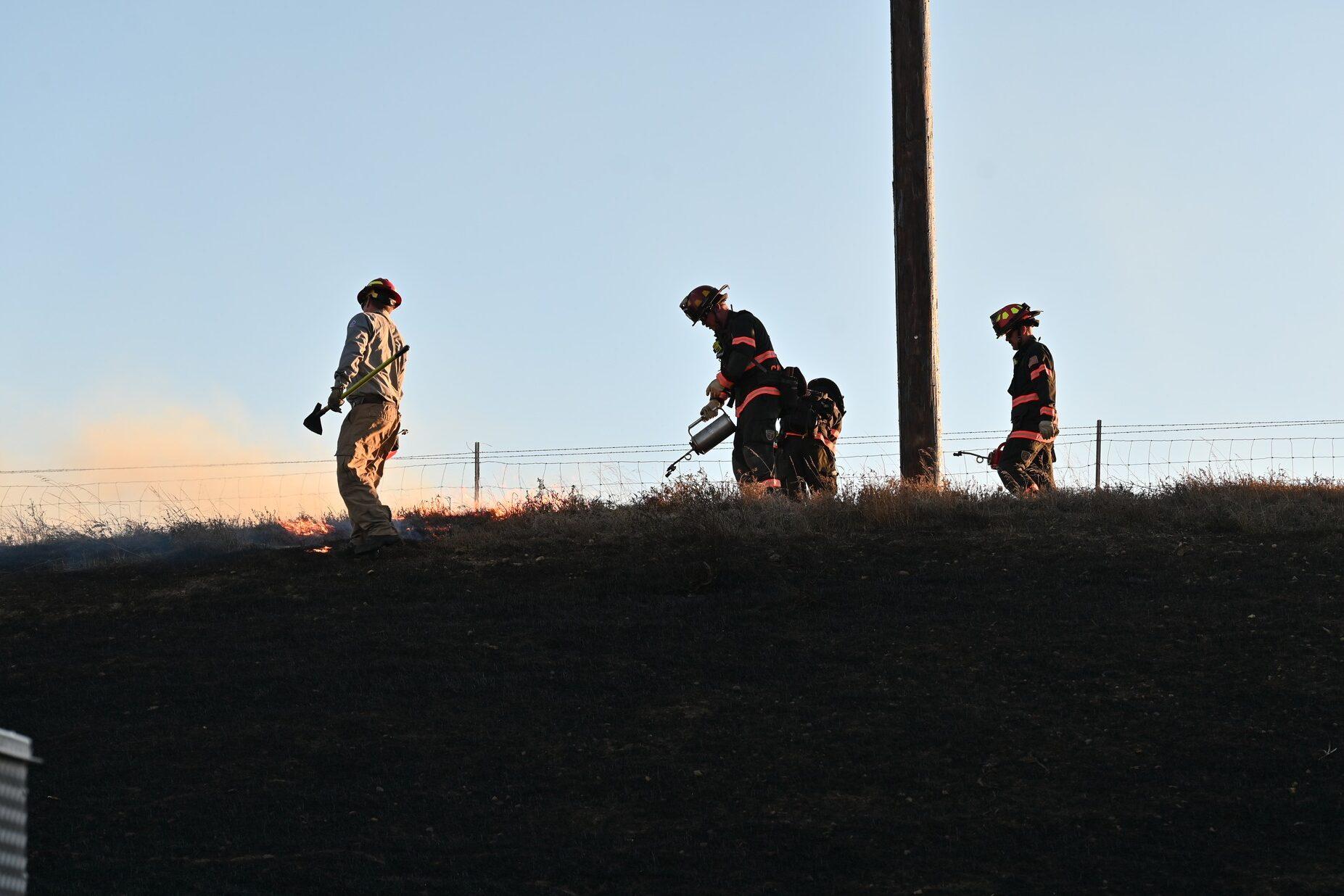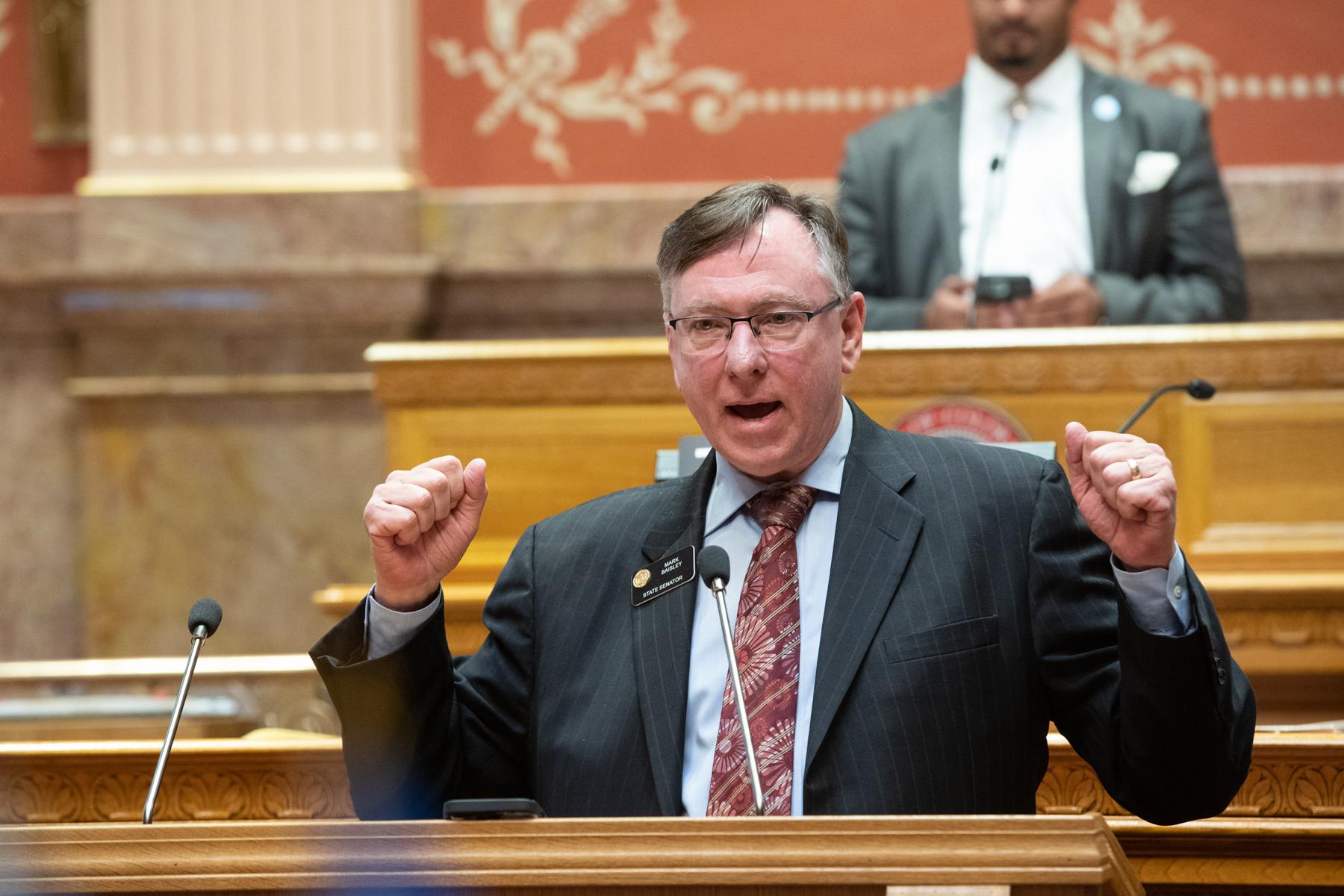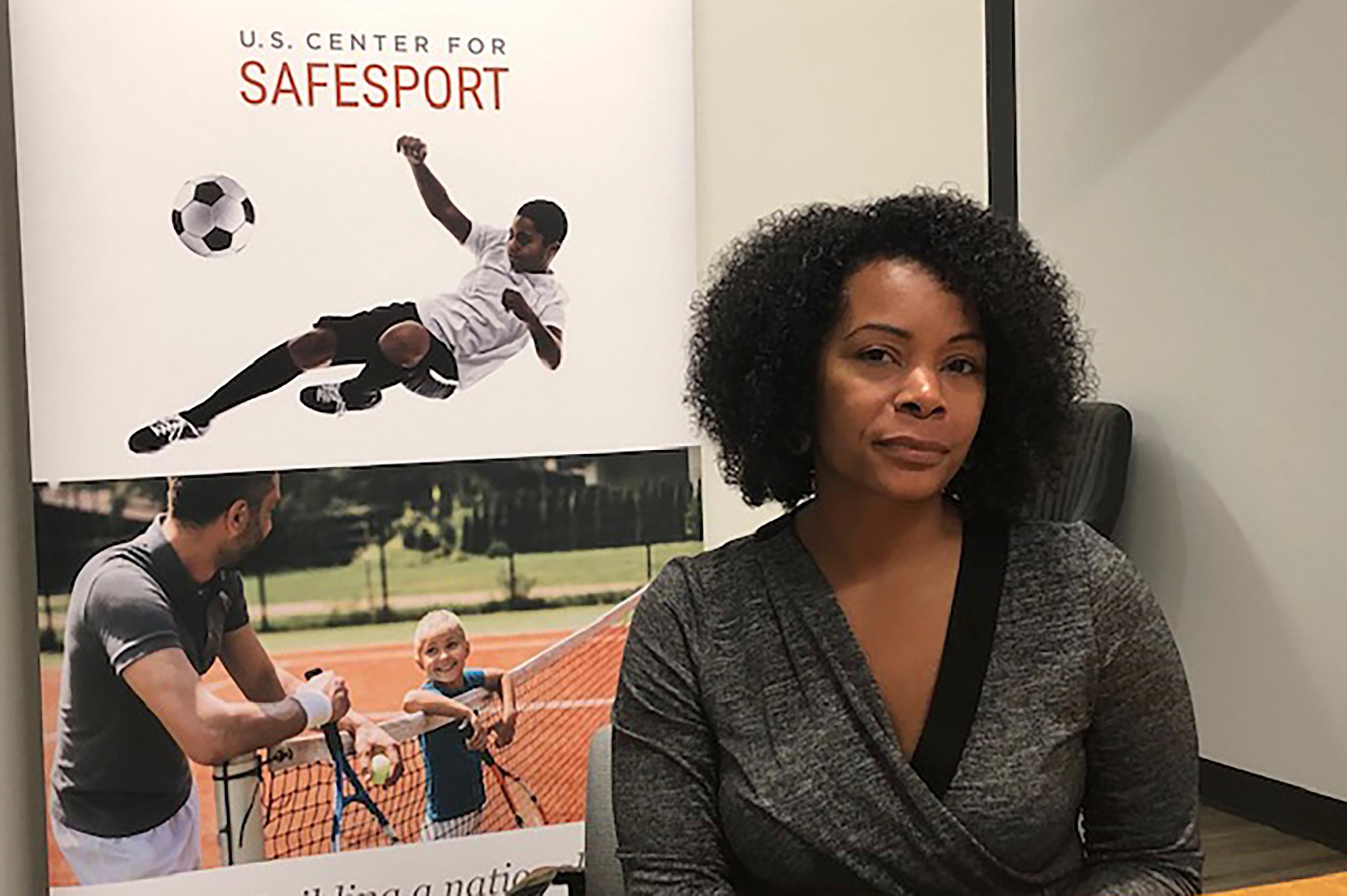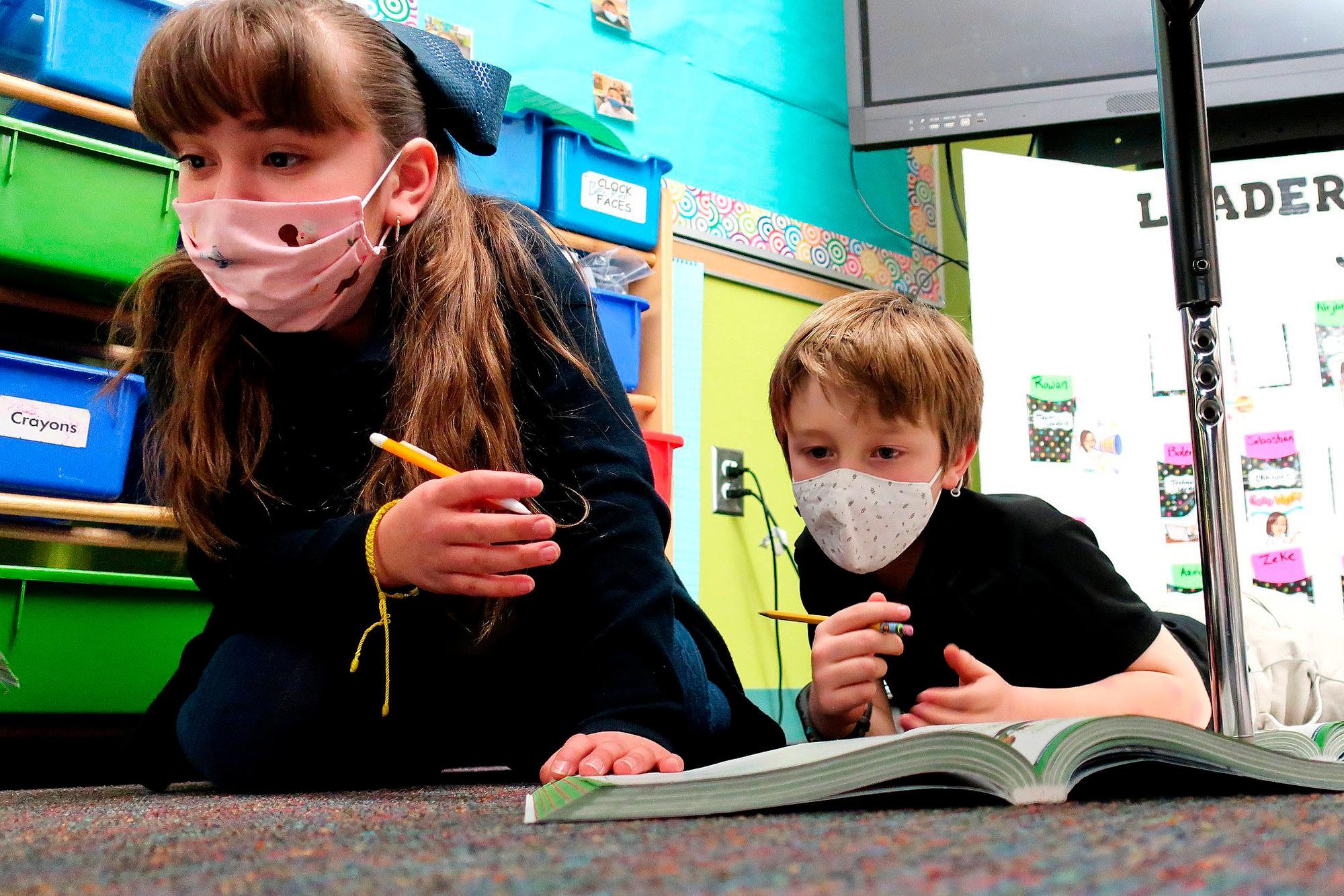
This is a continuing series on one of the first classrooms to go back to in-person learning – Renea Sutton’s Level 3 classroom, Room 132, at Josephine Hodgkins Leadership Academy in Westminster Public Schools.
Read Part 1, Part 2 and Part 3.
Jordynn's long hair is even longer.
Justin's lost most of his perm.
Amaya's taller.
Balentina wears glasses now.
Some of the children in Room 132 have turned nine years old since I last saw them in-person in October.
The Level 3 (like third grade) students at the Josephine Hodgkins Leadership Academy in the Westminster Public School District are thrilled to be back in class after going through remote learning part of November and all of December.
The kids crowd around me at recess to catch up, bursting to tell me about what remote learning was like, how they think they’re doing in school now, and what it feels like to be back.
“I really did not like looking at a screen all day,” said Azriel, sighing.
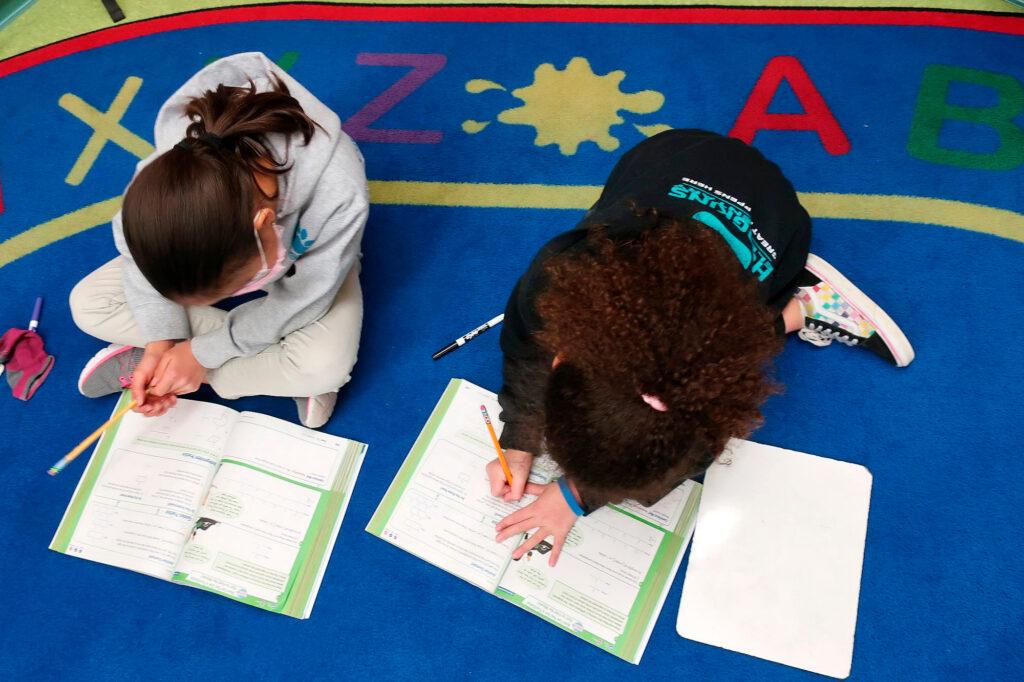
There’s a strong consensus. The children really disliked remote learning. They said it was harder and they didn’t learn as much. And for many kids, home is home and school is school, making it hard to focus.
“I couldn’t imagine school at my house because it’s my house and I can’t imagine school there,” said Justin, the boy who lost some of his curls.
Some of them said it was hard relying on siblings and parents for help.
“Some of my family is from Mexico, and they don’t speak English that much, so it’s kind of complicated,” said one boy.
Several national studies show student learning has regressed. One study released in December estimated the pandemic shut down last spring set students back several months in math. But the adults and children at Josephine Hodgkins Leadership Academy said the “lost learning” narrative dominating headlines is too simplistic.
True, there are some academic skills the kids don’t have that they’d typically have at this time of year. But teachers say they’ve gained a lot of skills too. With less than two months left in school, Renea Sutton is determined to do the best she can with the time she has left.
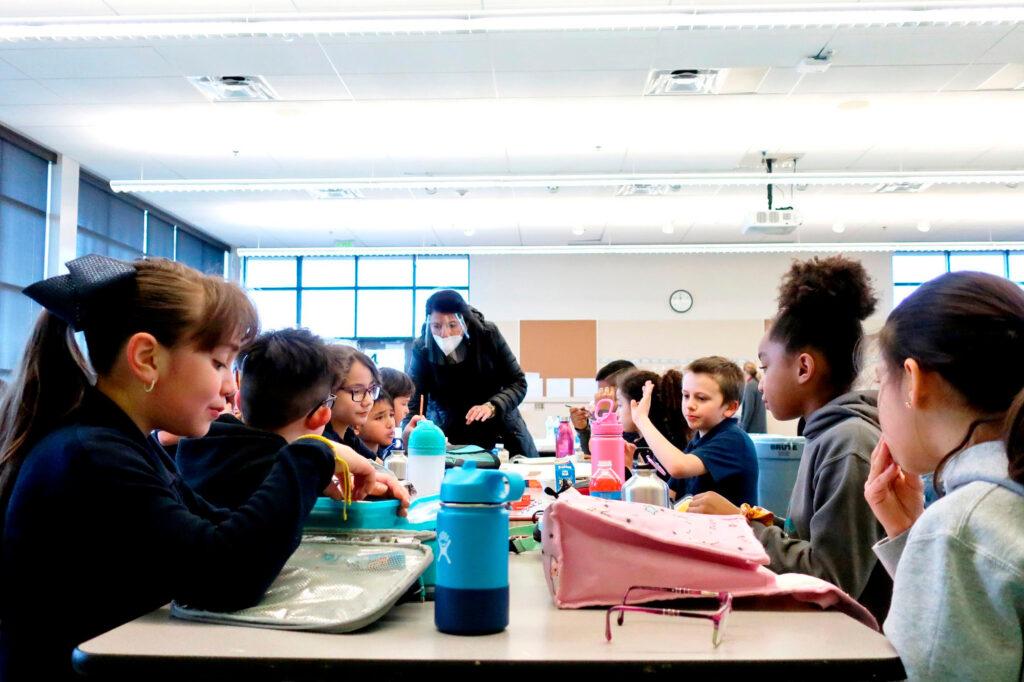
'It’s probably not feasible to get through everything this year.'
Sutton is relieved to be back.
“It is way better,” she said. “I don’t love the mask, but it’s still way better than trying to teach through a little box.”
After spending the first week or so reconnecting, focusing on students' social and emotional needs, going over norms, procedures, and expectations, the school pivoted quickly back into academics.
As Sutton flipped through stacks of test results, she said the majority of her students grew academically from the beginning of the year to mid-year. That surprised her. But some are behind.
“This is a student that I definitely already had some concerns about and just continued to have concerns,” she said pausing over one page of test results. “Because over remote, it was very difficult to keep attention, [he] was very unfocused, so as we came back, there was some growth, but it’s still far from where we need to be.”
Westminster school district officials said a sampling of tests across all schools showed younger learners in Kindergarten through second grade lost ground in literacy, while students in third through eighth grades struggled the most with math.
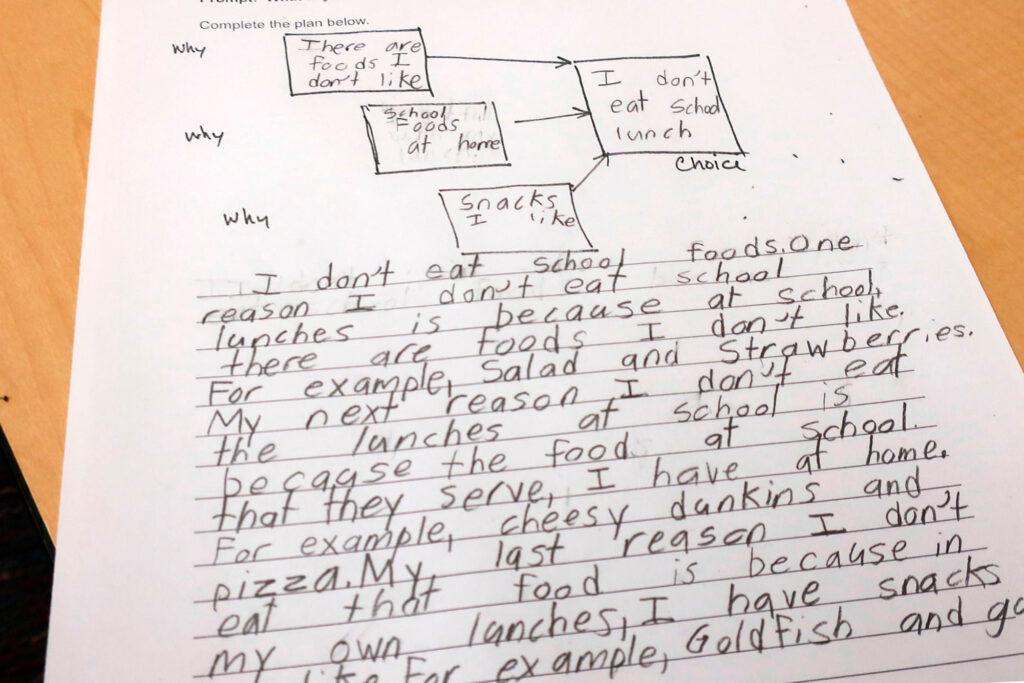
Statewide, there isn’t a lot of data yet. But Colorado has collected preliminary data of reading achievement among schools in the state’s Early Literacy Assessment Tool Project. The findings indicated “a significant reading loss” for Colorado students in first grade in 2020, with 44 percent of students performing significantly below grade level in reading, compared to 28 percent in 2019, according to Education Commissioner Katy Anthes.
Some of the parent-teacher conferences at the school, like at every other school in the nation, were tough. Hodgkins Leadership Academy Principal Amber Swieckowski told her staff that parents and students needed to leave the conference “knowing the absolute truth.”
“We're not sugarcoating anything because that doesn't do anything for the student, for the families. We all need to be on the same page, so we can start doing the work that needs to be done.”
Teachers attribute much of any academic slide to remote learning. At first, Sutton would give a lesson, then turn off Zoom to let students do their work independently. The students had multiple ways to reach her with questions.
“When I would look later, they just weren't doing it,” she said.
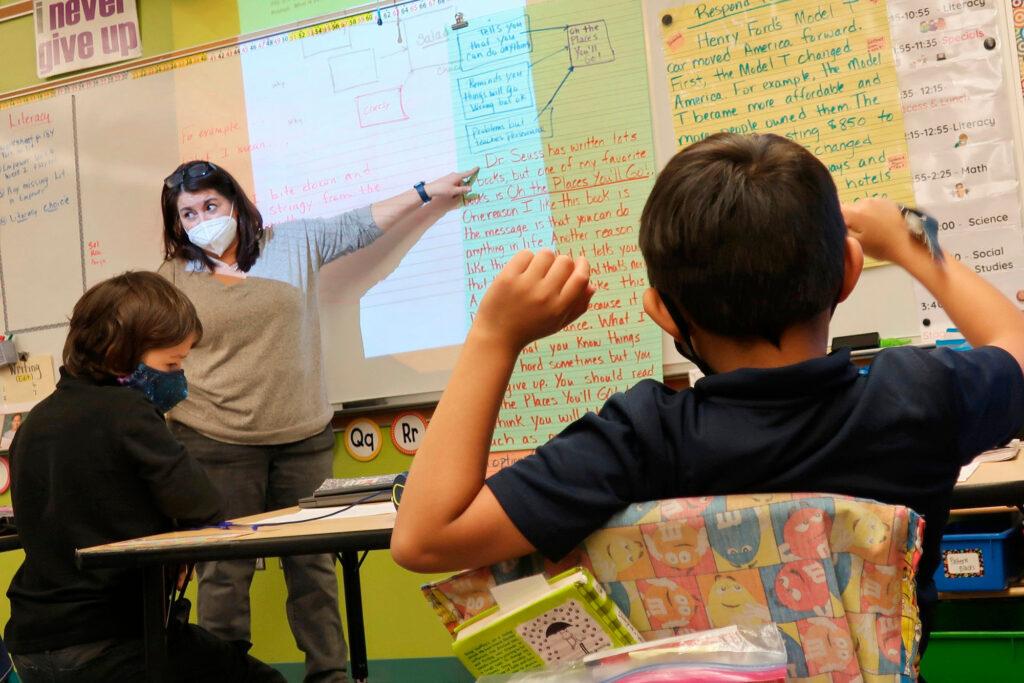
So, Sutton switched to keeping the Zoom on a lot more, popping into break rooms more frequently. She tried to strike a balance but it made for long days especially for third graders.
“We just can't cover everything the same way as if we're in person,” she said.
Now, with just a couple of months remaining in school, Sutton has to make choices about what to teach and what to skip. She is zeroing in on writing, in particular, and placing her students in more small math groups than before.
“It’s probably not feasible to get through everything this year,” she said.
The school has implemented after-school reading tutoring and the district has announced an optional extra 12 days of school at the end of the year.
Principal Swieckowski said it was exhausting keeping students engaged on Zoom. She’s hopeful that with the remainder of the year in person, where teachers have many more tools and tricks at their disposal, students are re-engaging with learning.
She said what was lost over Zoom was the art of teaching.
“The art that is where the real magic happens. It takes a certain kind of person. It takes a certain kind of personality,” Swieckowski said.
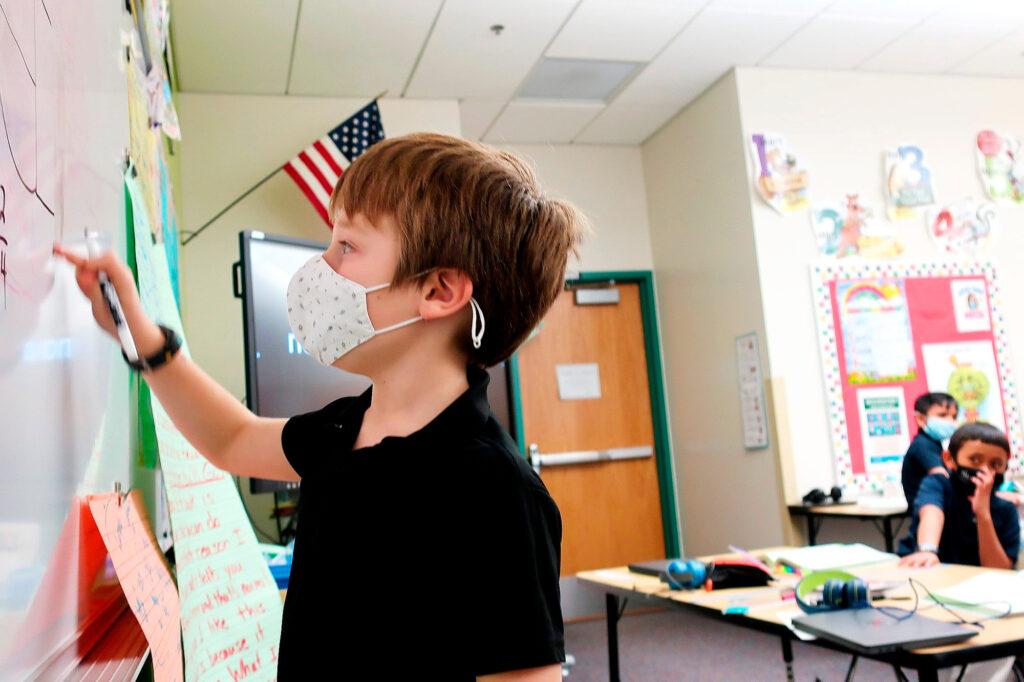
Fractions using paper candy bars works better in-person
On a recent day in Room 132, Sutton had the art of teaching on full display. Some of the best classroom teaching is physical, with lots of movement. Before digging into a lesson on fractions, Sutton leads a rousing reminder.
She points her finger high into the air. The kids yell: “Numerator!” and mimic her. She points down.
“Denominator!” they shout, pointing downwards. She scrambles the pattern and the kids have to keep up.
Some of the students are still struggling with “number sense.” That means the skills that allow children to work with numbers, like recognizing relationships between single items and groups of items, or number comparisons or symbols. Not having access during the first semester to shared manipulatives like counting materials hurt.
Then, a big debate ensues when Sutton asks students to compare one sixth of a student’s short distance race with one-sixth of another student’s long-distance race. Are the lengths of the two ‘one-sixth” segments the same?
“No!” the class shouts.
But one kid goes out on a limb and says they’re the same length. He convinces his classmates, who change their minds. Sutton tells them not to be wishy washy. She pops into action, grabbing a couple of sheets of paper, different sizes.
“If I’ve got two candy bars, one small, one big and I cut them in half,” she said, holding up the two pieces of paper. She cuts them in half to demonstrate that a fraction using a different size whole is not the same size.
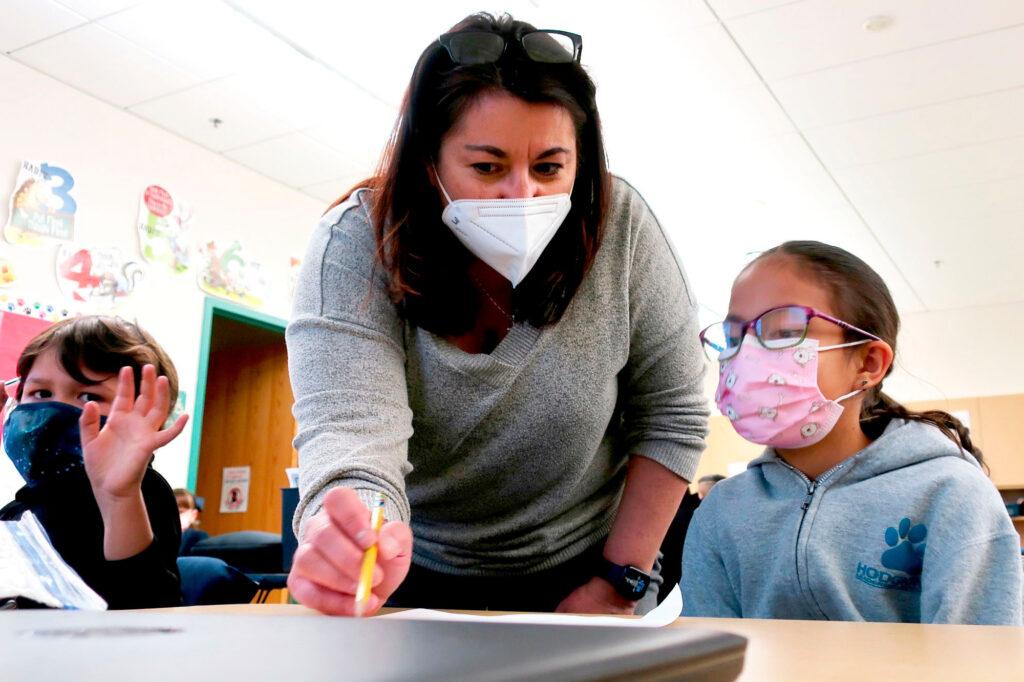
“Which one [candy bar] do you want?” she asks, holding the two pieces in front of the class. “The small one,” says a boy. The class laughs. “Fewer cavities,” says a girl.
The energy and engagement, laughter and live demonstration, you just can’t replicate that online.
Sutton knows the kids’ writing has suffered this year, too. So, she reviews how to write quick paragraphs with three different reasons why the students like a particular school lunch.
Sutton puts on soft music as the kids write. Sebastian has a flair for adjectives to describe why he likes his school lunch favorite, Sloppy Joes.
“Another reason I like the lunch, it looks like a deflated burger spilling something from its insides,” he wrote. “The last reason I like the lunch is because it’s like the weirdest burger I ate with the deflated part and the taste makes me groove like Michael Jackson.”
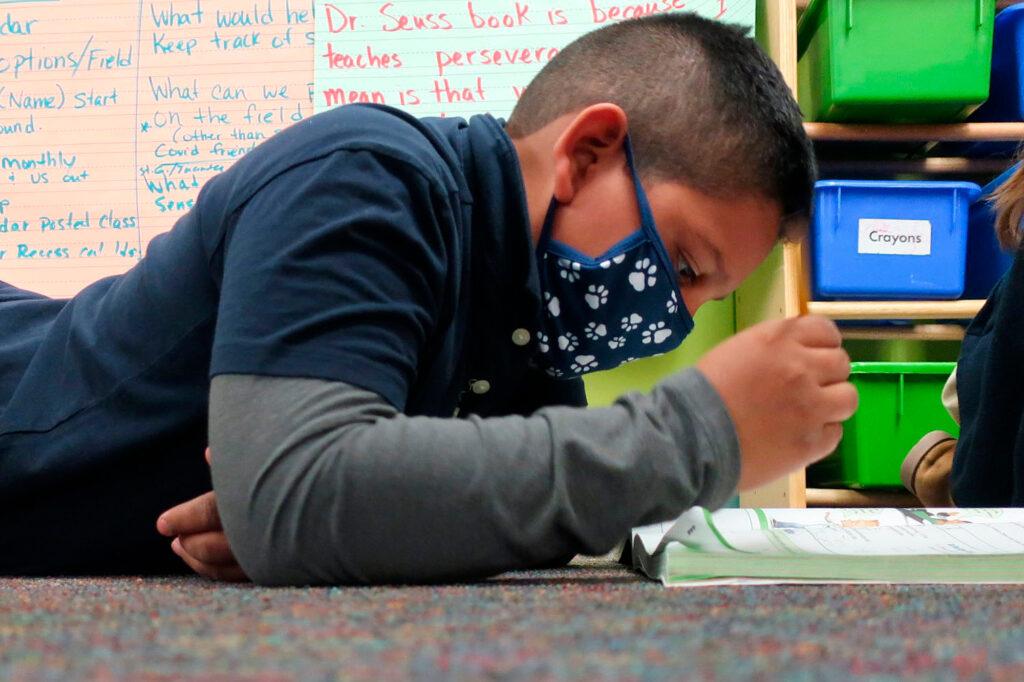
Students have made significant progress in other areas: building executive functioning skills, being in charge of a lot of their own learning, problem-solving, and time management.
Learning life skills like taking care of siblings and overcoming adversity are other skills the pandemic forced upon children.
Swieckowski said there are gains that students never would have gotten had they not gone remote. Like computer skills.
Alejandro showed how he shuttles material between computer tabs.
“I’m learning new things, now I know how to copy these …. and then I’m going to put paste, there’s a tab, and I do it here to add a shortcut and it’s easier,” he smiles.
The kids said they’ve also gotten closer. After the entire cafeteria claps out the Happy Birthday Song for someone, a pandemic-inspired alternative to singing, Room 132 sits down to lunch together, chatting and munching.
“Now that we're not just looking at a screen all day and we actually get to see each other and sit by each other at lunch, I think we have more of a friendship than when we were on Zoom,” Amaya said.
Hopefully Room 132 won’t have to go back on Zoom for the rest of the year. Swieckowski said she’s proud of students.
“Our students and families just went through a global pandemic and they thrived,” Swieckowski said. “I’m incredibly proud of their ability to survive such an ordeal.”
